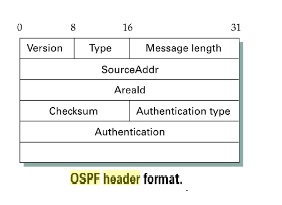Chapter: Computer Networks : Routing
Link State (OSPF)
LINK STATE (OSPF)
Link-state
routing is the second major class of intra domain routing protocol. The
starting assumptions for link-state routing are rather similar to those for
distance-vector routing. Each node is assumed to be capable of finding out the
state of the link to its neighbors (up or down) and the cost of each link.
Reliable Flooding
Reliable flooding is the
process of making sure that all the nodes participating in the routing protocol get a copy of the link-state
information from all the other nodes. As the term “flooding”
suggests,
the basic idea is for a node to send its link-state information out on its
entire directly connected links, with each node that receives this information
forwarding it out on all of its
links. This process continues until the information has reached all the nodes
in the network.
·
The ID of the node that created the LSP;
·
A list of directly connected neighbors of that
node, with the cost of the link to
·
each one;
·
A sequence number;
·
A time to live for this packet.
One of
the most widely used link-state routing protocols is OSPF. The first word,
“Open,” refers to the fact that it is an open, nonproprietary standard, created
under the auspices of the IETF. The “SPF” part comes from an alternative name
for link-state routing.

·
Authentication of routing messages
·
Additional hierarchy
·
Load balancing

OSPF Header Format
There are
several different types of OSPF messages, but all begin with the same header
The Version field is currently set to 2, and the Type field may take the values
1 through 5. The SourceAddr identifies the sender of the message, and the
AreaId is a 32-bit identifier of the area in which the node is located. The
entire packet, except the authentication data, is protected by a 16-bit
checksum using the same algorithm as the IP header (see Section 2.4). The
Authentication type is 0 if no authentication is used; otherwise it may be 1,
implying a simple password is used, or 2, which indicates that a cryptographic
authentication checksum, of the sort described in
Section
8.3, is used. In the latter cases the Authentication field carries the password
or cryptographic checksum.Of the five OSPF message types, type 1 is the “hello”
message, which a
router
sends to its peers to notify them that it is still alive and connected as
described above.
Related Topics